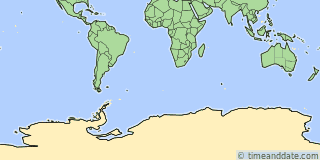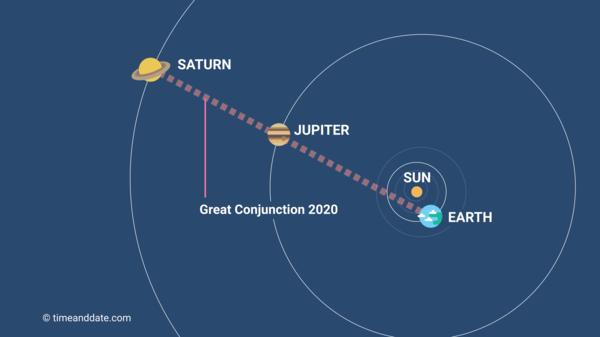19 hours, 4 minutes
Fri, Jul 26 at 4:05 pm – Sat, Jul 27 at 11:09 am
Visible tonight, Jul 26 – Jul 27, 2024
| Mercury: | ↓ Fri 7:51 pm | ↑ Sat 10:45 am |
|---|---|---|
| Venus: | Until Fri 5:42 pm | |
| Mars: | From Sat 7:24 am | |
| Jupiter: | From Sat 8:37 am | |
| Saturn: | From Fri 9:25 pm | |
| Uranus: | ↑ Sat 6:26 am | ↓ Sat 11:09 am |
| Neptune: | From Fri 10:54 pm |
Venus Returns as the Evening Star
Starting from around now—depending on the latitude of your town or city—Venus is returning to the western sky after sunset.
Our Interactive Night Sky Map simulates the sky above Rothera Research Station. The Moon and planets have been enlarged slightly for clarity. On mobile devices, tap to steer the map by pointing your device at the sky. Need some help?
Tonight's Sky in Rothera Research Station, Jul 26 – Jul 27, 2024 (7 planets visible)
Mercury rise and set in Rothera Research Station
View just after sunset.
Mercury is close to the Sun and can only be seen shortly after sunset. Try finding a good, unobstructed view of the horizon.
Fri, Jul 26 ↓7:51 pm
Sat, Jul 27 ↑10:45 am
Time:
Altitude: °
Direction: °
Venus rise and set in Rothera Research Station
View just after sunset.
Venus is close to the Sun and can only be seen shortly after sunset. Try finding a good, unobstructed view of the horizon. Venus is visible by day, but may be hard to find.
Fri, Jul 26 ↓5:42 pm
Time:
Altitude: °
Direction: °
Mars rise and set in Rothera Research Station
View before sunrise.
Mars can best be seen in the hours just before sunrise. Visibility deteriorates as the sky gets brighter. It is very close to the horizon, making it fainter because the light has to cover a larger distance when traveling through the Earth's atmosphere. Make sure to get an unobstructed view with as little light pollution as possible.
Sat, Jul 27 ↑7:24 am
Time:
Altitude: °
Direction: °
Jupiter rise and set in Rothera Research Station
View before sunrise.
Jupiter can best be seen in the hours just before sunrise. Visibility deteriorates as the sky gets brighter.
Sat, Jul 27 ↑8:37 am
Time:
Altitude: °
Direction: °
Saturn rise and set in Rothera Research Station
View in the early morning.
Saturn can be seen for more than 13 hours during the late night/early morning and until sunrise.
Fri, Jul 26 ↑9:25 pm
Time:
Altitude: °
Direction: °
Uranus rise and set in Rothera Research Station
View before sunrise. Bring binoculars.
Uranus can best be seen in the hours just before sunrise. Visibility deteriorates as the sky gets brighter. It is very close to the horizon, making it fainter because the light has to cover a larger distance when traveling through the Earth's atmosphere. Make sure to get an unobstructed view with as little light pollution as possible. You may need binoculars.
Sat, Jul 27 ↑6:26 am
Sat, Jul 27 ↓11:09 am
Time:
Altitude: °
Direction: °
Neptune rise and set in Rothera Research Station
View in the early morning. Use binoculars.
Neptune can be seen for more than 12 hours during the late night/early morning and until sunrise. Very faint, use binoculars.
Fri, Jul 26 ↑10:54 pm
Time:
Altitude: °
Direction: °
Planets Visible in Rothera Research Station
| Planetrise/Planetset, Fri, Jul 26, 2024 | ||||
|---|---|---|---|---|
| Planet | Rise | Set | Meridian | Comment |
| Mercury | Fri 10:51 am | Fri 7:51 pm | Fri 3:20 pm | Slightly difficult to see |
| Venus | Fri 11:36 am | Fri 5:42 pm | Fri 2:38 pm | Fairly good visibility |
| Mars | Sat 7:24 am | Sat 11:16 am | Sat 9:20 am | Very difficult to see |
| Jupiter | Sat 8:37 am | Sat 11:19 am | Sat 9:58 am | Fairly good visibility |
| Saturn | Fri 9:25 pm | Sat 11:40 am | Sat 4:32 am | Great visibility |
| Uranus | Sat 6:26 am | Sat 11:09 am | Sat 8:47 am | Very difficult to see |
| Neptune | Fri 10:54 pm | Sat 11:29 am | Sat 5:11 am | Difficult to see |













